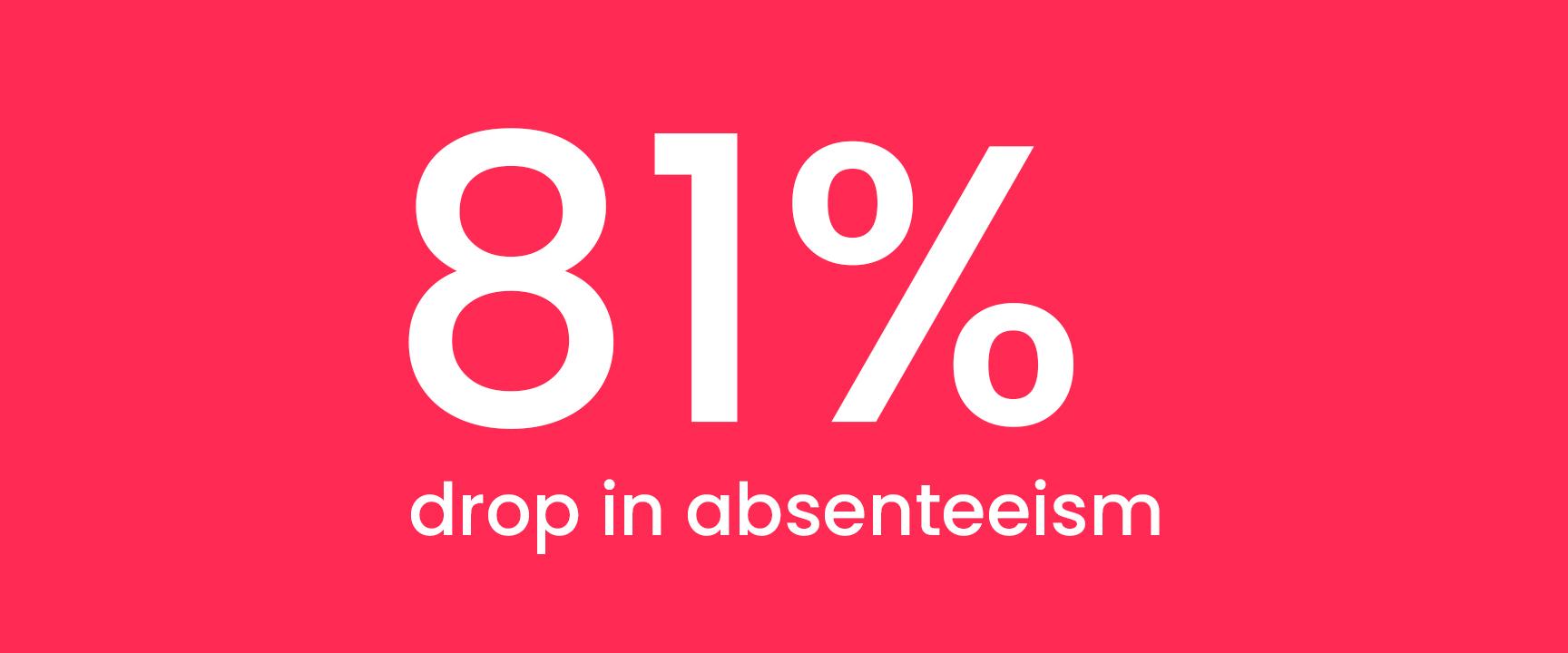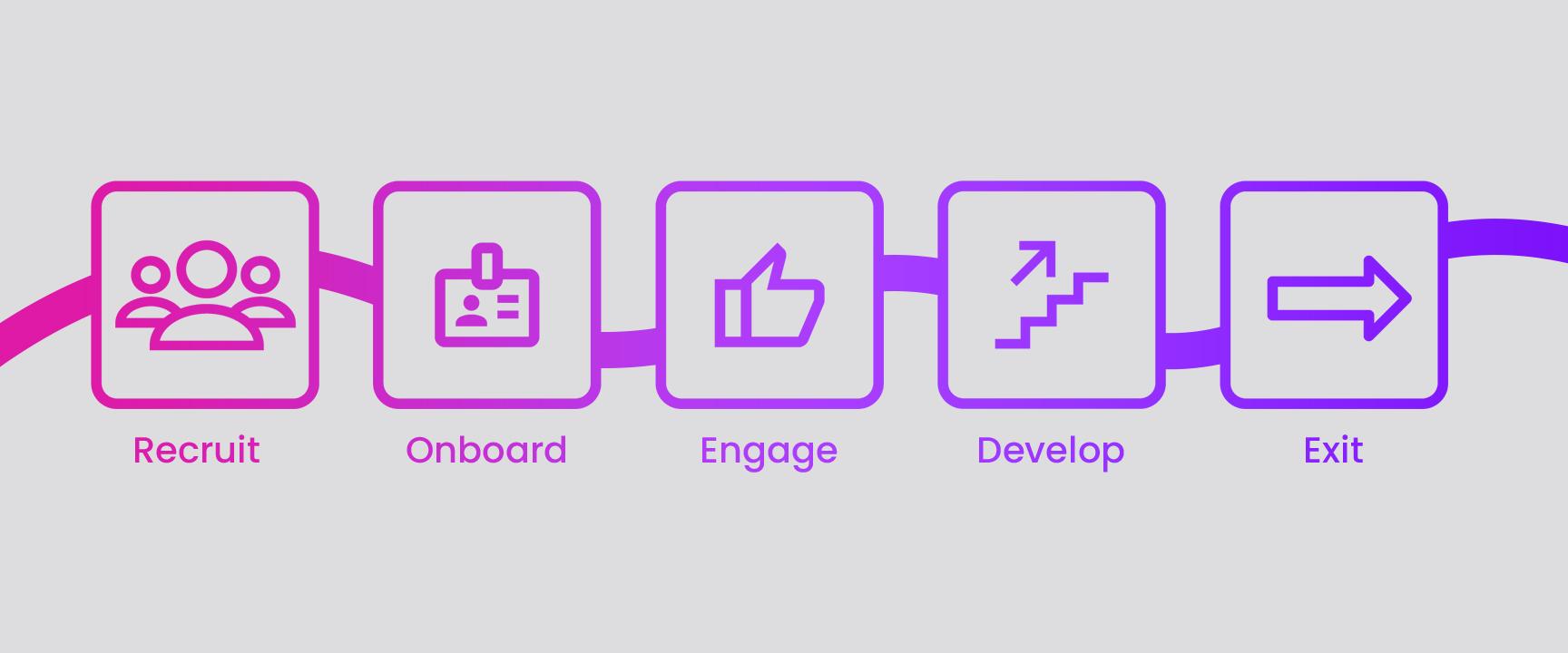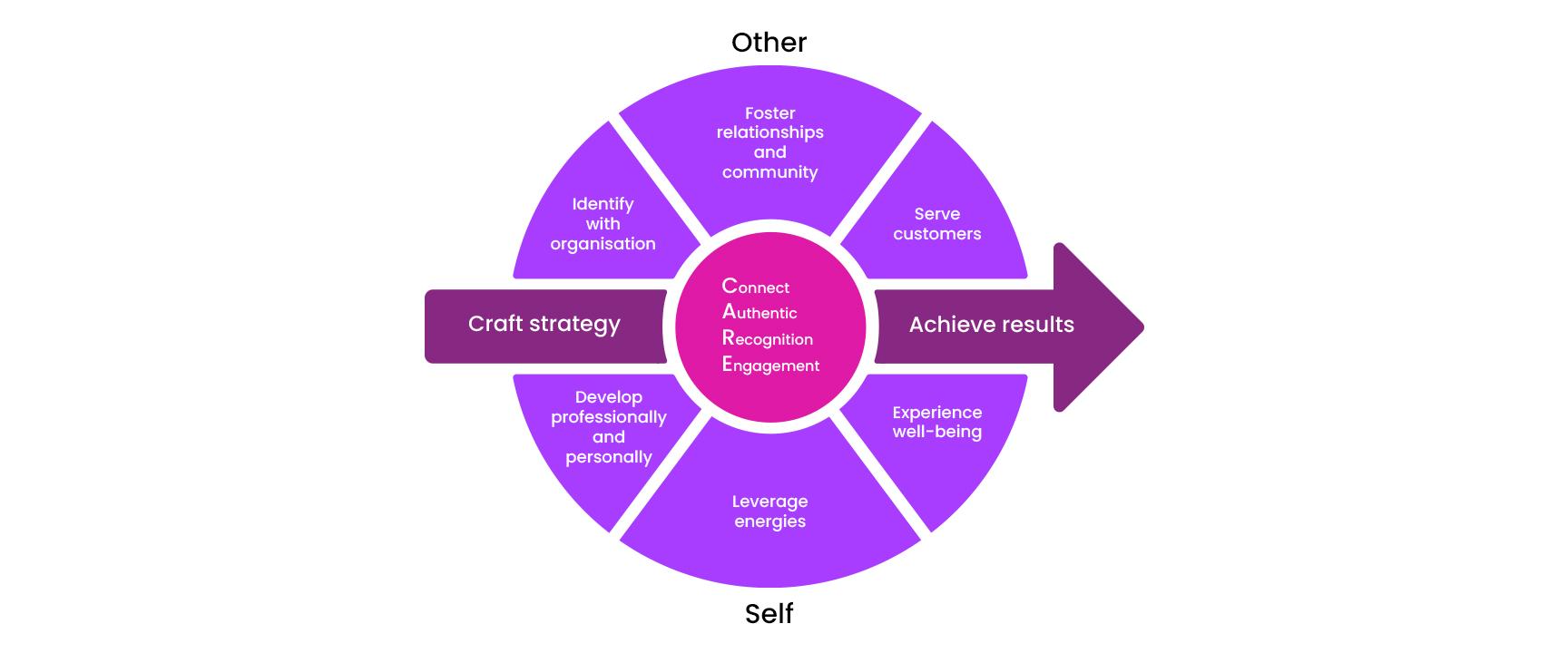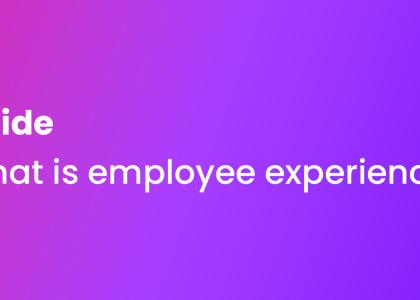Examples of employee experience
Employee experience is a broad term that can cover a wide range of areas. We’ve selected a few that our research suggests employees find most important, although the aspects your employees value most may vary.
- Mental and emotional wellbeing: Do you encourage a healthy work-life balance?
- Financial wellbeing: If you can’t offer pay rises, what about earned wage access tools?
- Physical wellbeing: Can you subsidise healthy lunches or gym memberships?
- Social wellbeing: Are there opportunities for employees to interact outside of work, even if they’re remote?
Why employee experience matters
Picture this: You walk into a workplace where everyone greets you with warm smiles, the atmosphere is buzzing with positivity, and you feel valued and appreciated for your contributions. Now, contrast that with a scenario where you step into an office and the tension is palpable, no one seems to communicate with each other, and you feel like just another cog in the machine. Which one sounds like a place where you'd thrive? It’s probably the first.
Employee experience is all about the journey an employee takes throughout their time with your company. It encompasses the entire working environment as well as every interaction with you as an employer, from the first interview to the exit interview.
It matters because it influences how employees feel about their work, their colleagues, and the whole organisation. Because happy employees aren’t just a nice-to-have; they're the backbone of a flourishing business.
Think about it: when employees feel engaged, motivated, and supported, they're more likely to go the extra mile and stick around for years to come. On the other hand, disengaged employees can lead to lower productivity, higher turnover rates, and ultimately, a negative impact on the bottom line.
According to our own research, 24% of leaders said high employee engagement was a key driver to high performance.
Benefits of employee experience
“One of the main things that underpins our culture is that happy employees create a happy workforce. MHR allows us to do that…we can identify trends in absence and help people when they need it, they get their payslips earlier so they can budget properly. It is absolutely creating a better workforce.”- Stacy Standen, Payroll and Benefits Analyst, Admiral Insurance.
Employee retention is the most cited benefit of a good employee experience, which is critical for overcoming skills gaps and ensuring you’re not constantly recruiting replacements.
However, there are numerous other benefits to having improved your employee experience. Simply put, companies with an engaged workforce outperform companies that don’t. Businesses with engaged workers see a 23% boost in profitability. They also see an 81% drop in absenteeism.
For example, consider how employee attitudes affect the customer experience. Engaged employees are more likely to go the extra mile to ensure that customers are happy too, while disengaged employees will only attempt the bare minimum.

Possible employee experience challenges
There are three core challenges to consider when building out a good employee experience.
Firstly, while some organisations now put resources behind their employee experience, with some even going as far as to create Chief Employee Experience Officer roles, many don’t. If you don’t invest in the employee experience, your organisation will suffer.
In addition, remote work can create a great employee experience for many, but others may find it isolating. It can be hard to create an interconnected team if there are no opportunities to meet and talk face-to-face. It really depends on the employee, so take this on a case-by-case basis.
Finally, AI can have a hugely positive impact on the employee experience, often by automating the least engaging parts of someone’s job. However, poorly implemented AI systems can cause unnecessary stress, with employees feeling overwhelmed, disconnected or undermined. An effective implementation that considers how employees will use any given AI tool will help them engage.
The role of HR in employee experience
Your HR team will form a fundamental part of any employee experience strategy. Most of the issues that employees will face in the workplace will come down to HR fundamentals. Good managers, good pay packages and training are all key components, and they are all matters that come back to HR.
Rebecca Carter, Head of Product at MHR says, “Employee experience is everyone’s responsibility, but HR departments are best suited to map out the key touchpoints and standards of your employee experience. When properly invested in and given the tools and time to succeed, they can lead the charge. They’re also key to finding the right people who will match the organisation’s goals and values, in addition to helping employees develop into great performers. That will reduce friction down the line. After that, managers, leaders and employees will be able to take responsibility more effectively.”
HR departments often struggle to find time for creating more high-level people-focused strategies, because so much of their time is spent on day-to-day administrative tasks. This can really damage the employee experience. With investment in tech that can automate these tasks and encourage employee self-service, you’ll give your HR team more time while improving your employee experience across the board.
Stages of employee experience

Employee experience is broken down into five distinct stages. Let’s take a look at each one.
- Recruit: It all begins with the recruitment process. This is your chance to make a stellar first impression and showcase what makes your company a great place to work. From building a strong reputation in the job market to conducting interviews, every interaction affects your overall success.
- Onboard: Once you've found the perfect fit, it's time for onboarding. This is more than just filling out paperwork - it's about helping new hires feel welcome, informed, and equipped to succeed in their roles. A well-designed onboarding process can make all the difference in ensuring employees meet expectations and feel like part of the team.
- Engage: This is where the bulk of the employee experience takes place, encompassing every aspect of work life from day-to-day tasks to building relationships with colleagues. Things like clear communication, meaningful work, and a supportive manager all contribute to a positive experience. When employees feel valued, challenged, and respected, they're more likely to be engaged.
- Develop: Nobody wants to feel like they're stuck in a dead-end job. Employees need to know there are opportunities for growth within your organisation, and that their hard work will be rewarded, whether it’s through training programmes, mentorship, or clear paths for progression. Investing in professional development also helps you build a robust talent pipeline for future roles.
- Exit: Whether an employee is leaving for another opportunity or retiring after years of service, how you handle their departure can leave a lasting impression. A thoughtful exit process shows you value employees even as they're moving on, influencing how they talk about your company in the future. It also boosts morale among remaining team members.
Employee experience models
An employee experience model is a framework that you can use to assess what your employees need and where your focus should be. Here are a few models that you can use to get started, but we’d recommend customising them to your organisation’s unique needs.
The JD-R Model
Designed in 2006 by Arnold Bakker and Evangelia Demerouti, the JD-R model is focused more on predicting cases of employee burnout. This takes a more specific problem and gives a framework for resolving it, instead of trying to cover a wide range of problems.
This model defines job demands (the emotional or physical burdens placed on an employee) as well as job resources (the tools, support systems and processes that will help them manage those demands). The model aims to balance demands with resources, so things are optimised. Employees are given the support they need to avoid burning out, without the employer needing to overcompensate with resources that just waste money.
The Zinger Model
Created by management consultant David Zinger, this model focuses on the importance of employee connections to other employees, the company, their customers, the broader community and to themselves.
The Zinger model can be visualised as a pyramid, with four key traits being identified as necessities which form the base. This gives the rest of the less essential needs a stable foundation to be built onto.

The Deloitte Model
Developed by one of the world’s biggest accounting firms, the Deloitte model was designed after extensive interviews with Deloitte’s 330,000 employees. It outlines five key areas that make for a more positive workplace, as well as four strategies per element to consider.
This model is concise and has a focus on simplicity. This makes it a great starting choice.
Employee experience vs employee engagement
Differences and similarities between employee experience and engagement
Employee experience and employee engagement are often used interchangeably, but they're not quite the same thing. Let's untangle these two critical aspects of people management.
Employee experience:
Experience covers every touchpoint an employee has with your organisation, from recruitment to resignation and everything in between. It's about the overall journey and how employees feel about their work environment, the culture, their relationships with colleagues, and the support they receive from managers.
Employee engagement:
Engagement refers to the emotional commitment an employee has to their organisation and its goals. Engaged employees are passionate about their work, feel a sense of connection to their company's mission, and go above and beyond to contribute to its success.
How they’re related:
A positive employee experience often leads to higher levels of engagement, as satisfied employees are more likely to be emotionally invested in their work and their organisation. Engaged employees also contribute to a positive employee experience by creating a more enthusiastic and inspiring atmosphere.
The shifting focus from engagement to experience
In recent years, focus has switched from employee engagement to employee experience, and for good reason. While engagement is important, it's just one piece of the puzzle – the end result of a positive employee experience. Companies now realise that to attract, retain, and motivate top talent, they need to create an environment where employees can thrive at every stage of their journey.
Here are some of the reasons behind this shift.
Workforce demographics:
Younger generations are reshaping traditional notions of employment, prioritising factors like work-life balance and ethical values over conventional financial benefits. This makes engaging employees far more complex and less one-dimensional.
Technology:
While remote work initially threatened cultural cohesion, cutting-edge HR software and an influx of online collaboration platforms have come to the rescue. The latest tools make it easier than ever to create a seamless and engaging employee experience while maintaining multiple touchpoints with employees who don’t work on site.
Enhancing employee experience
Strategies to improve employee experience
Now that we understand the importance of employee experience, let's explore some practical strategies for enhancing it within your organisation.
1. Create a positive work environment:
Help employees feel valued and supported by encouraging collaboration and open communication, recognising achievements, and providing opportunities for social connection among team members.
2. Prioritise work-life balance:
Encourage employees to take breaks, unplug after work hours, and offer flexible working arrangements to accommodate people's individual needs and responsibilities outside of work. You could even support emotional and physical wellbeing with things like mental health services and subsidised gym memberships.
3. Invest in development:
Provide plenty of opportunities for training, mentorship, and career advancement to help everyone reach their full potential.
4. Improve efficiency:
Remove barriers to productivity by automating repetitive tasks, streamlining processes, and giving employees the right tools to do their jobs. Getting rid of frustrating tasks empowers employees to focus on what they do best.
5. Solicit and act on feedback:
Regularly ask employees about their experiences, challenges, and suggestions for improvement. You could use surveys, focus groups, or one-on-one conversations to gather insights into what's working well and what’s not. Then, take action by addressing concerns and making changes swiftly.
How leaders can enhance employee experience
Leadership plays a crucial role in shaping the employee experience and setting the tone for the whole organisation. Here are some ways leaders can enhance employee experience.
1. Lead by example: Embody the values and behaviours you want to see in employees. For example, demonstrate openness and integrity in all interactions, and model a healthy work-life balance to show employees it’s ok to do the same.
2. Communicate effectively: Communicating well builds trust, supports collaboration, and ensures everyone is on the same page. Be transparent about changes and encourage open dialogue at all levels of the organisation. 59% of employees think that extra investment in collaboration and communication would boost performance.
3. Empower employees: Employees’ unique talents and perspectives can lead to valuable changes. So give team members the autonomy to make important decisions about their work and offer the resources and encouragement they need to innovate.
Our high-performance research shows a large disconnect between what employees value and what leaders value. Leaders play a vital role in shaping tone across the employee life cycle, so setting goals and keeping to them is key.
Measuring employee experience
Tools and techniques for assessing employee experience
You can't improve what you don't measure. To gauge the effectiveness of your efforts and identify areas for improvement, you need the right tools and techniques for assessing employee experience. Here are some successful methods.
1. Surveys
Surveys are a classic tool for collecting feedback from employees about their experiences, perceptions, and satisfaction levels. Whether it's an annual engagement survey, regular pulse surveys, or targeted surveys focused on specific aspects of the employee experience, surveys provide valuable insights into how employees are feeling and what matters most to them. What’s more, you can use your survey communications to show how much you value employees’ input and explain what you plan to do with the results. AI-powered sentiment analysis can give you a strong sense of the mood across your organisation, making it easier to action those results.
2. Interviews and focus groups
Interviews and focus groups offer a more in-depth exploration of employees' experiences and perspectives. Conduct one-on-one interviews or group discussions to delve into specific issues or gather feedback on broader topics. These qualitative methods can provide context and nuance to complement the quantitative data you collect through surveys.
3. Regular check-ins
Check-ins (or one-to-ones) aren’t just for reviewing to-do lists. They’re also the perfect opportunity to gather informal feedback and gauge employees’ reactions to what’s happening around them. On top of this, they boost engagement by showing employees you’re willing to invest time in them and listen to what they have to say. AI can be a great enabler here, as it can help offer up more robust talking points, making for more impactful and useful conversations.
4. Performance metrics
Performance metrics such as turnover rate, absenteeism, and productivity levels also provide valuable indicators of employee experience. Employees jumping ship or spending lots of time off sick may signal underlying issues like burnout or even workplace bullying, while a drop in productivity could indicate a lack of motivation.
5. Social media and online reviews
You may fear social media and websites like Glassdoor if that’s where employees go to complain when they’re not happy. But they’re also a goldmine of candid employee feedback. With employees able to review and rate employers anonymously, you’ll get the most honest, and therefore the most valuable, information from these sources.
Interpreting and acting on employee experience data
Collecting data is just the first step - what you do with it is what really matters. Here are some tips for using the data you’ve gathered effectively:
1. Analyse trends and patterns
Examine the data you’ve collected to identify common themes and recurring issues that may be impacting the employee experience. Make sure you attribute feedback to the correct employee experience stages so that you can segment the data in a meaningful way. This is where the right analytics and reporting software becomes indispensable.
2. Seek input and collaboration
Don't make assumptions about what employees want or need; instead, involve them in the process. Ask employees at all levels of the organisation to help you come up with solutions that address their concerns and aspirations. By involving them in the decision-making process, you not only gain valuable insights, but you also create a sense of ownership and buy-in for the changes ahead. At the other extreme, failing to act on employees’ feedback quickly will lead to them taking future opinion-gathering exercises less seriously.
3. Develop action plans
Based on the insights you’ve gleaned, develop action plans with clear goals, timelines, and responsibilities. Prioritise areas for improvement based on their potential impact and feasibility, and allocate the resources needed to ensure initiatives succeed. Don’t forget to be transparent about your plans and offer employees regular progress updates.
4. Monitor and adapt
Once you've implemented changes, continue to measure employee experience to check that they’re effective. Employee experience is an ongoing journey, not a one-off project, so stay flexible and responsive. Be open to further feedback and be willing to adapt your approach based on new information or changing circumstances.
It’s clear that investing in a positive employee experience isn't just about being nice - it's a strategic move that directly enhances business performance. To create a workplace where everyone thrives, you need the tools and expertise to manage employee touchpoints, measure engagement, and deliver initiatives that improve the employee experience.
Tech and employee experience
87% of high-performing organisations attribute their success to the strategic use of technology
55% of leaders think it’s impossible to improve performance without access to real-time data and insights.
Technology can smooth out the edges of an employee’s day. Whether it’s by automating tedious tasks or making it easier for management to create great experiences backed by actual data, you can make smarter decisions and build a world of work that helps you keep great talent for the long haul.
People First, our cloud-based, AI-powered HR and payroll platform can get you started on this journey. It enables you to:
- Support your workforce with clearly signposted development opportunities
- Create a seamless experience from recruiting to offboarding
- Reduce administration so your HR team can drive more proactive strategies
- Align all your people and finance data into one platform, creating a consistent, compliant source of data
Want to learn more and create an employee experience that works for everyone? Find out how we've integrated employee experience into People First.



